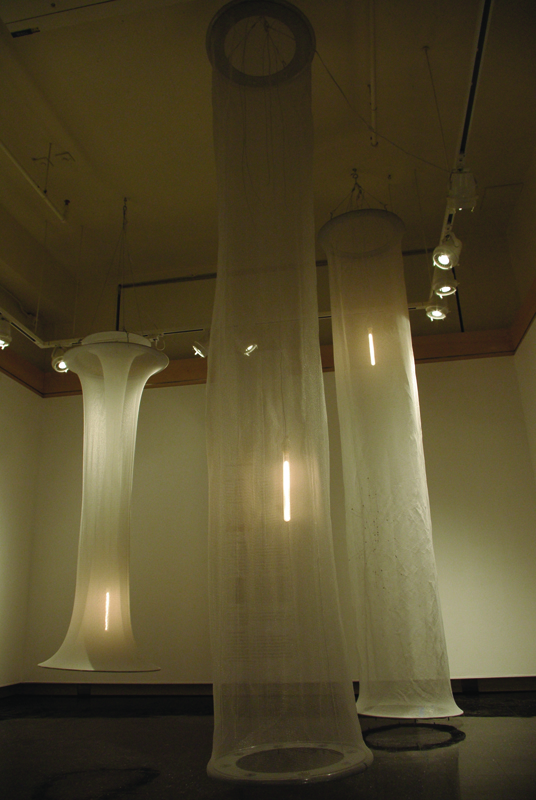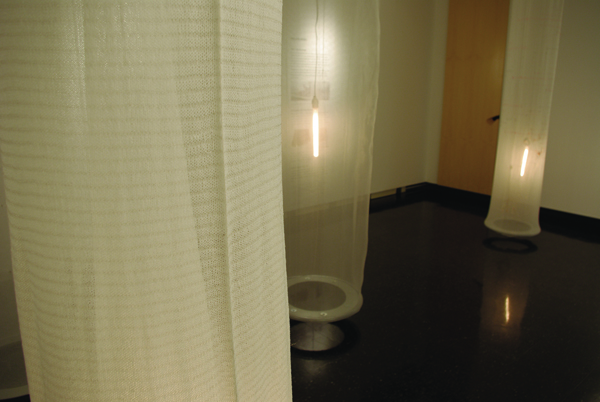PATTERNING BY HEAT: RESPONSIVE TENSION STRUCTURES








![JPEG image[2]_SMALLsmall_100dpi.jpg](https://images.squarespace-cdn.com/content/v1/555529ade4b0c3c63aae6cde/1457559258552-NLP8MLMKX0A1D0S6B49Q/JPEG+image%5B2%5D_SMALLsmall_100dpi.jpg)
Patterning by Heat: Responsive Tension Textiles
Exhibition at the Keller Gallery, M.I.T.
Patterning by Heat: The Responsive Textile Structures presented 4 tubular computational textile tension structures. Each structure showed one of two material responses which were activated by an electrical current triggered by a proximity sensor. This current irreversibly changed the pattern and surface appearance of the material.
The first typology of material developed was pixilated, designed with yarn that melts at high temperature; accordingly, the fabric opens or breaks when it receives current. The opening allows designers flexibility to experiment with see through effects on the fabric, or to ‘write’ upon the fabric making apertures, collecting foreground and background through the qualities of the material. The second material has been designed with yarn that shrinks or closes into solid lines in the fabric when it receives current. The shrinking reveals a more opaque patterning in the textile closing parts of that textile off, transforming the material and the quality of space framed by that material.
The core questions guiding this design work was “how can we design lightweight textiles for use in architecture that can change properties in response to their environment? For example how might we make textiles that open up if the temperature surrounding the textile becomes hot, or if one wants more transparency in that textile to see the view? Similarly, we asked “how can we make a textile that closes the view, cuts down light coming through its surface and thickens itself which slows down energy transfer through its surface?” We have been asking ‘what’ these materials can be ‘when’.[1]
1. Kennedy, S. 2011. Responsive materials, in Material Design: Informing Architecture by Materiality,
Switzerland: Birkhauser. pg. 118-131.
TEAM: Delia Dumitrescu, PHhD The Swedish School of Textiles in Boras Swedent and Chalmers IT University Gothenburg